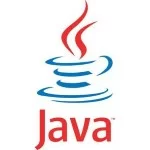Java Serialization Alternatives: Kryo, Protobuf, and Avro Compared
Java’s built-in serialization mechanism is a convenient way to convert objects into byte streams for storage or transmission. However, it is often criticized for its inefficiency, lack of cross-language support, and security vulnerabilities. As a result, developers frequently turn to alternative serialization frameworks that offer better performance, flexibility, and compatibility. In this article, we’ll explore three popular Java serialization alternatives: Kryo, Protocol Buffers (Protobuf), and Apache Avro. We’ll compare their features, performance, and use cases to help you choose the right tool for your project.
1. Java Built-in Serialization: A Quick Recap
Java’s native serialization is simple to use but comes with several drawbacks:
- Performance: Slow and generates large byte streams.
- Security: Vulnerable to deserialization attacks.
- Cross-Language Support: Limited to Java, making it unsuitable for polyglot systems.
- Versioning: Poor support for schema evolution.
These limitations have led to the rise of alternative serialization frameworks.
2. Kryo: Fast and Lightweight
Kryo is a Java-specific serialization library designed for high performance and minimal overhead.
Features
- Speed: Kryo is significantly faster than Java’s built-in serialization.
- Compact Output: Produces smaller byte streams compared to Java serialization.
- Ease of Use: Simple API for serializing and deserializing objects.
- Flexibility: Supports custom serializers for fine-grained control.
Use Cases
- Ideal for Java-only applications where performance is critical.
- Suitable for caching, in-memory data storage, and real-time systems.
Example
1 2 3 4 5 6 7 8 | Kryo kryo = new Kryo();Output output = new Output(new FileOutputStream("file.bin"));kryo.writeObject(output, myObject);output.close();Input input = new Input(new FileInputStream("file.bin"));MyObject deserialized = kryo.readObject(input, MyObject.class);input.close(); |
Pros
- Extremely fast and lightweight.
- Easy to integrate into Java projects.
Cons
- Limited to Java, making it unsuitable for cross-platform systems.
- Lack of schema support can complicate versioning.
3. Protocol Buffers (Protobuf): Compact and Cross-Language
Developed by Google, Protocol Buffers (Protobuf) is a language-neutral serialization framework that emphasizes efficiency and interoperability.
Features
- Compact Binary Format: Produces very small serialized outputs.
- Schema-Based: Requires a
.protofile to define the data structure. - Cross-Language Support: Supports multiple programming languages, including Java, Python, and C++.
- Versioning: Built-in support for schema evolution.
Use Cases
- Ideal for microservices, distributed systems, and cross-platform applications.
- Suitable for systems where bandwidth and storage efficiency are critical.
Example
- Define a
.protofile:
1 2 3 4 5 6 | syntax = "proto3";message Person { string name = 1; int32 id = 2; string email = 3;} |
- Generate Java classes using the Protobuf compiler.
- Serialize and deserialize in Java:
1 2 3 4 5 6 7 8 | Person person = Person.newBuilder() .setName("John Doe") .setId(1234) .setEmail("john@example.com") .build();byte[] serialized = person.toByteArray();Person deserialized = Person.parseFrom(serialized); |
Pros
- Highly efficient and compact.
- Excellent support for schema evolution and cross-language compatibility.
Cons
- Requires a separate compilation step to generate classes.
- Slightly more complex setup compared to Kryo.
4. Apache Avro: Schema-Based and Big Data Friendly
Apache Avro is a schema-based serialization framework designed for big data and interoperability.
Features
- Schema-Based: Uses JSON-based schemas to define data structures.
- Compact Binary Format: Produces small serialized outputs.
- Cross-Language Support: Works with multiple programming languages.
- Schema Evolution: Supports backward and forward compatibility.
Use Cases
- Ideal for big data systems like Apache Hadoop and Apache Kafka.
- Suitable for applications requiring schema evolution and interoperability.
Example
- Define a schema in JSON:
1 2 3 4 5 6 7 8 9 | { "type": "record", "name": "Person", "fields": [ {"name": "name", "type": "string"}, {"name": "id", "type": "int"}, {"name": "email", "type": "string"} ]} |
2. Serialize and deserialize in Java:
01 02 03 04 05 06 07 08 09 10 11 12 13 14 15 16 | Schema schema = new Schema.Parser().parse(new File("person.avsc"));GenericRecord person = new GenericData.Record(schema);person.put("name", "John Doe");person.put("id", 1234);person.put("email", "john@example.com");DatumWriter<GenericRecord> writer = new GenericDatumWriter<>(schema);ByteArrayOutputStream output = new ByteArrayOutputStream();Encoder encoder = EncoderFactory.get().binaryEncoder(output, null);writer.write(person, encoder);encoder.flush();byte[] serialized = output.toByteArray();DatumReader<GenericRecord> reader = new GenericDatumReader<>(schema);Decoder decoder = DecoderFactory.get().binaryDecoder(serialized, null);GenericRecord deserialized = reader.read(null, decoder); |
Pros
- Excellent support for schema evolution and big data systems.
- Compact and efficient serialization.
Cons
- Requires schema files, which can add complexity.
- Slightly slower than Kryo and Protobuf in some cases.
5. Comparison Table
| Feature | Kryo | Protobuf | Avro |
|---|---|---|---|
| Performance | Very fast | Fast | Moderate |
| Output Size | Small | Very small | Small |
| Schema Support | No | Yes (.proto files) | Yes (JSON schemas) |
| Cross-Language | Java-only | Yes | Yes |
| Schema Evolution | No | Yes | Yes |
| Ease of Use | Very easy | Moderate | Moderate |
| Best Use Case | Java-only, high-performance apps | Cross-platform, microservices | Big data, schema-heavy systems |
6. Which One Should You Choose?
- Kryo: Choose Kryo if you’re working on a Java-only project and need maximum performance.
- Protobuf: Opt for Protobuf if you need cross-language support, compact serialization, and schema evolution.
- Avro: Use Avro if you’re working with big data systems or need robust schema evolution capabilities.
7. Conclusion
While Java’s built-in serialization is easy to use, its limitations make it unsuitable for modern, high-performance, and cross-platform applications. Kryo, Protobuf, and Avro each offer unique advantages, depending on your use case. By understanding their strengths and weaknesses, you can select the best serialization framework for your project and ensure efficient, secure, and scalable data handling.



